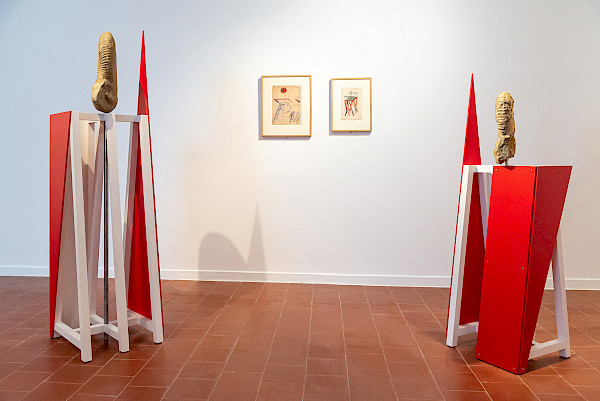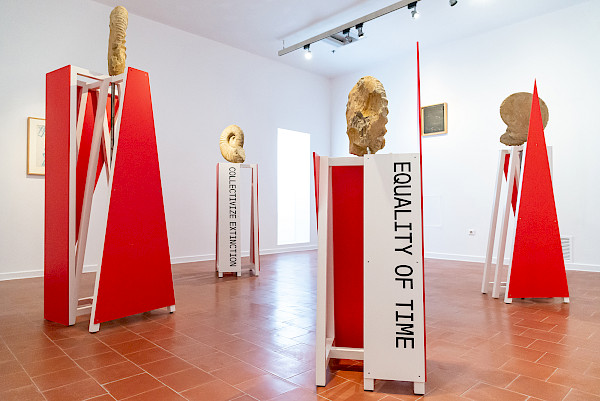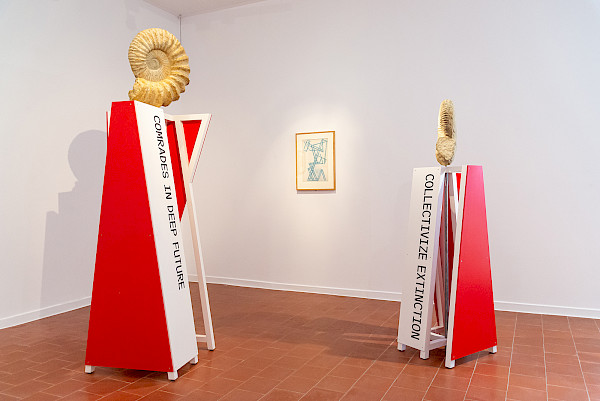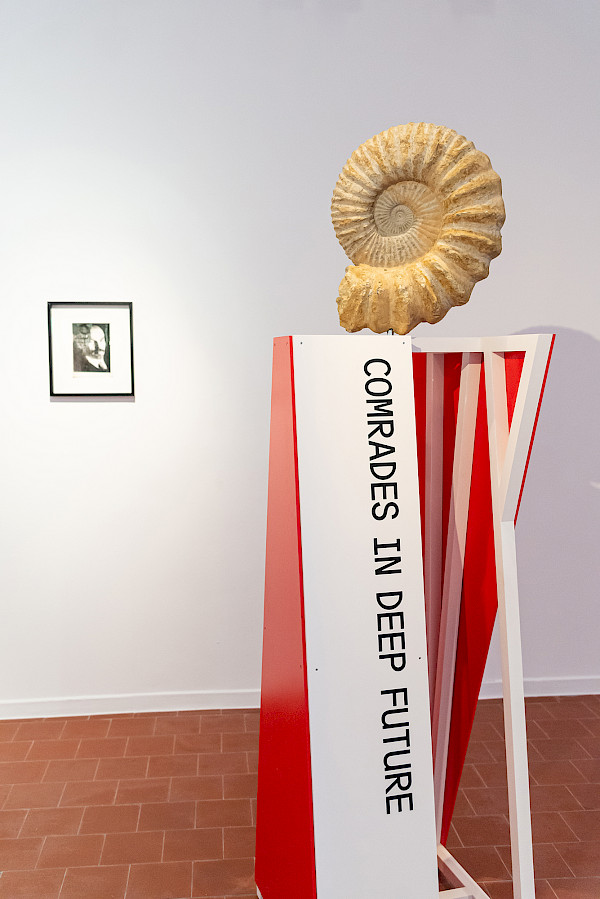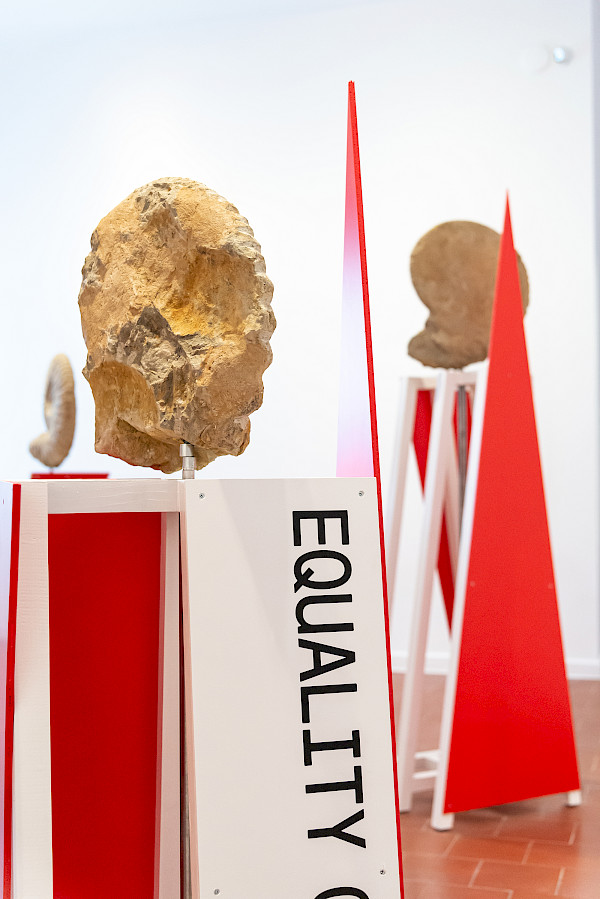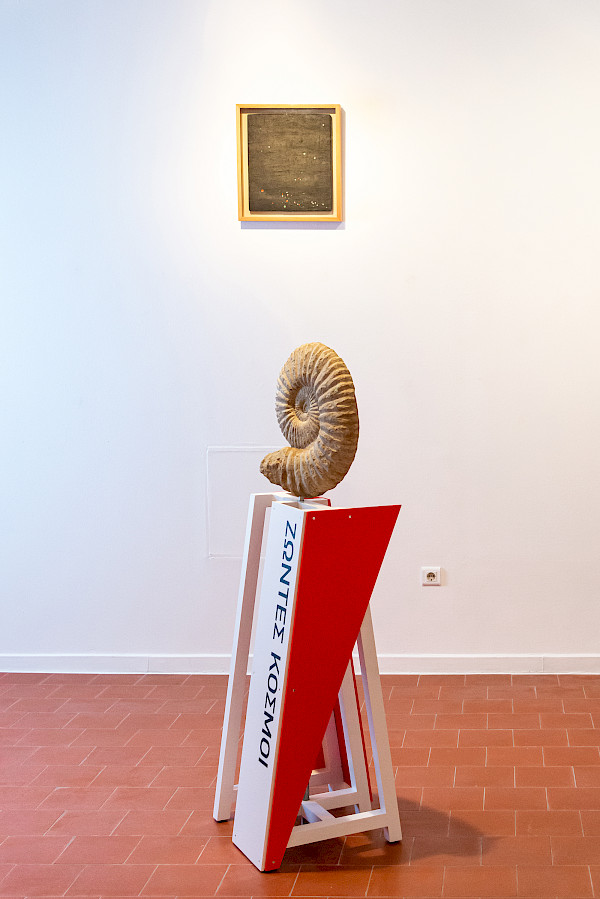Neo-Constructivist Ammonites
2019
Neo-Constructivist Ammonites builds on the heritage of the Russian constructivists and productivists that spoke of revolutionary objects as “comrades”. In the Soviet Union former commodities would not just become de-alienated shared property but manifest as revolutionary agents in their own right. This work expands on this theory of the object-as-comrade to include non-humans actors, by creating neo-constructivist “bodies” for ammonite fossils from Imouzzer Ida Ou Tanane (Morocco) that are between 66 and 300 million years old.
This now extinct shelled mollusk is closely related to the octopus and squid, and dominated the earth’s oceans until it perished in the 5th mass extinction. Their neo-constructivist extensions serve to recognize non-human comradeship in a time in which human species face the unfolding of the 6th mass extinction of their own making: they are fossils, and we are fossils-in-the-making. Through slogans such as “Comrades in Deep Future,” “Demand the Present” and “Collectivize Extinction”, the neo-constructivist ammonites invite for a multispecies transhistorical dialogue, from deep past to deep future, to deepen solidary co-existence in the present.
Alongside the installation, Staal selected works from the constructivist and productivist artists from the Costakis collection in Thessaloniki that relate directly to the theory of the object-as-comrade. Gustav Klutsis’ studies Agitprop of Communism (1922) and Design for Propaganda Kiosk (1922) for example, were meant to propagate the objectives of the revolution through loudspeakers, slogans and newspapers, but in the process become acting bodies themselves. Varvana Stepanova’s Composition [Head] (1920) and Gustav Klutsis’ Photomontage with a Portrait of Lenin (undated) show a merger of the revolutionary human and comradely object into shared hybrid bodies. Alexander Rodchenko’s Construction No.3 (1921) is a human-like machine, or machine-like human, whereas his Dots, Composition No.117 (1920), evokes a view of outer space with comradely constellations of stars.
-
Project by:
Jonas Staal
-
Project team:
Jonas Staal (artist), Paul Kuipers (architect), Remco van Bladel (graphic designer), Younes Bouadi and Nadine Gouders (production and coordination Studio Jonas Staal), Landstra ontwerp en uitvoering (construction)
-
Commissioned by:
Public Art Agency Sweden, adapted for the 7th Thessaloniki Biennale









